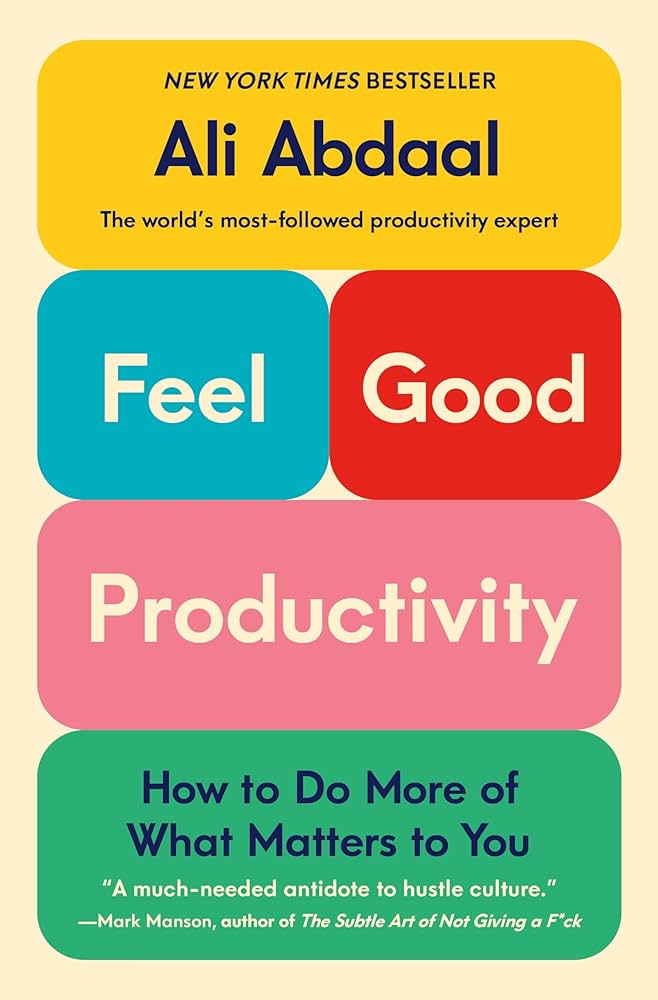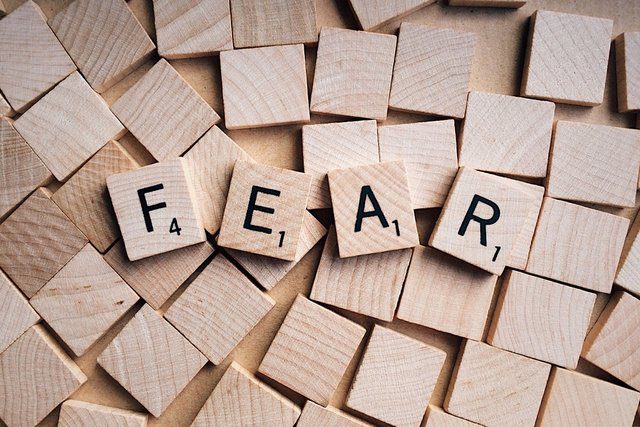In Feel-Good Productivity: How to Do More of What Matters to You, a former doctor turned YouTuber, podcaster, and entrepreneur Dr. Ali Abdaal argues that the key to productivity isn’t discipline but joy. He provides a framework and various experiments for making projects more enjoyable so that productivity takes care of itself.
Three Parts of the Book
- Part 1 explains how to use the science of feel-good productivity to energise yourself.
The Three Energizers: Play, Power and People
- Part 2: Examines how feel-good productivity can help us overcome procrastination.
The Three Blockers: Uncertainty, Fear and Inertia
- Part 3: How feel-good productivity can sustain us in the long term.
The Three types of burnout: Overexertion burnout, depletion burnout and misalignment burnout
The Three Sustainers: Conserve, Recharge and Align
‘If the treatment isn’t working, question the diagnosis.”
Feel-good Productivity
An approach that didn’t hinge on exhaustingly hard work, but on understanding what made hard work feel better. An approach that focused on my wellbeing first, and used that wellbeing to drive my focus and motivation second.
The Candle Problem – Karl Duncker
This is the ‘candle problem’, a classic test of creative thinking. First developed by Karl Duncker, and published posthumously in 1945, it has since been used in countless studies testing everything from cognitive flexibility to the psychological fallout of stress. In the late 1970s, psychologist Alice Isen used it as the basis for an influential experiment to study how mood affects people’s creativity.
It showed that when we’re in a positive mood, we tend to consider a broader range of actions, be more open to new experiences, and better integrate the information we receive. In other words, feeling good boosts our creativity – and our productivity.
“broaden-and-build theory of positive emotions.
According to the broaden-and-build theory, positive emotions ‘broaden’ our awareness and ‘build’ our cognitive and social resources. Broaden refers to the immediate effect of positive emotions: when we’re feeling good, our minds open up, we take in more information, and we see more possibilities around us. Consider the candle problem: in a positive mood, participants were able to see a broader range of potential solutions.
Build refers to the long-term effects of positive emotions. When we experience positive emotions, we build up a reservoir of mental and emotional resources that can help us in the future – resources like resilience, creativity, problem-solving skills, social connections and physical health. Over time, these two processes reinforce each other, creating an upward spiral of positivity, growth and success.
Feeling Good
Positive emotions are bound up with a set of four hormones – endorphins, serotonin, dopamine and oxytocin – which are often labelled as the ‘feel-good hormones’. All of them allow us to accomplish more.
- Endorphins are often released during physical activity, stress or pain and bring about feelings of happiness and diminished discomfort – and elevated levels usually correlate with increased energy and motivation.
- Serotonin is connected to mood regulation, sleep, appetite and overall feelings of wellbeing; it underpins our sense of contentment and gives us the energy to tackle tasks efficiently.
- Dopamine, or the ‘reward’ hormone, is linked with motivation and pleasure and its release provides a satisfaction that allows us to focus for longer.
- Oxytocin, known as the ‘love’ hormone, is associated with social bonding, trust and relationship-building, which enhances our capacity to connect with others, boosts our mood and, in turn, impacts our productivity.
All this means that these feel-good hormones are the starting point of a virtuous cycle. When we feel good, we generate energy, which boosts our productivity. And this productivity leads to feelings of achievement, which make us feel good all over again.
“Success doesn’t lead to feeling good. Feeling good leads to success.”
Play and Noble Prize Winners
- James Watson and Francis Crick, who discovered the structure of DNA in the 1950s, described the generative process they used to come up with the structure as ‘constructing a set of molecular models and beginning to play’.
- Alexander Fleming, the scientist who discovered the antibiotic penicillin, once described his job as ‘playing with microbes’.
- Donna Strickland, the 2018 Nobel laureate in Physics, described her career as ‘getting to play with high-intensity lasers’.”
- Konstantin Novoselov, who shared the 2010 Nobel Prize in Physics for helping discover graphene, put it most simply: ‘If you try to win the Nobel, you won’t, he reflected. ‘The way we were working really was quite playful.
The 8 Play Personalities
- The Collector loves to gather and organise, enjoying activities like searching for rare plants, or rummaging around in archives or garage sales.
- The Competitor enjoys games and sports, and takes pleasure in trying their best and winning.
- The Explorer likes to wander, discovering new places and things they’ve never seen, through hiking, road tripping and other adventures.
- The Creator finds joy in making things, and can spend hours every day drawing, painting, making music, gardening and more.
- The Storyteller has an active imagination and uses their imagination to entertain others. They’re drawn to activities like writing, dance, theatre and role-playing games.
- The Joker endeavours to make people laugh, and may play by performing stand-up, doing improv, or just pulling a lot of pranks to make you smile.
- The Director likes to plan, organise and lead others, and can fit into many different roles and activities, from directing stage performances to running a company, to working in political or social advocacy.
- The Kinesthete finds play in physical activities like acrobatics, gymnastics and free running.
What would this look like if it were fun?
Think of a task that you don’t want to do right now, and ask what would it look like if it were fun? Could you do it in a different way? Could you add music, or a sense of humour, or get creative? What if you set out to do the task with friends, or promised yourself a treat at the end of the process?
Lower the stakes
Children are more likely to play when they’re in a comfortable, non-threatening environment. And studies of adults in the workplace have found that the feeling of relaxation promotes playful behaviours, as well as promoting creativity and wellbeing.
“Motivation and discipline are useful strategies, but they’re band-aids covering up deeper wounds. They might sometimes work to treat the symptoms, but they don’t change the underlying condition.”
The Five Whys
In its original form, the five whys offered a simple method to work out why something had gone wrong. Whenever there was a mistake on the production line, Toyota’s staff would ask ‘why’ five times. Asking ‘why’ repeatedly reminds us of what we should really be focusing on – and allows us to home in on it. Suddenly, those irrelevant pressing tasks seem less important. The greatest purpose – the big ‘why’ – comes into sharp relief.
Implementation Intentions
Implementation intentions have been the research focus of Peter Gollwitzer, a psychology professor at New York University. They offer a method that builds moments for your new behaviour into your daily routine, just like the cues in that Boston study. If you decide beforehand when you’re going to do something, you’re much more likely to do it.
According to Gollwitzer, the best formula for implementation intentions is a conditional statement: ‘If X happens, then I will Y.’
If you want to practise mindfulness but aren’t sure how to fit this practice into your schedule, create a trigger: ‘When I get up for my regular midday cup of tea today, I will take five deep breaths before walking to the staff kitchen.
All the Best in your quest to get better. Don’t Settle: Live with Passion.



Comments are closed.